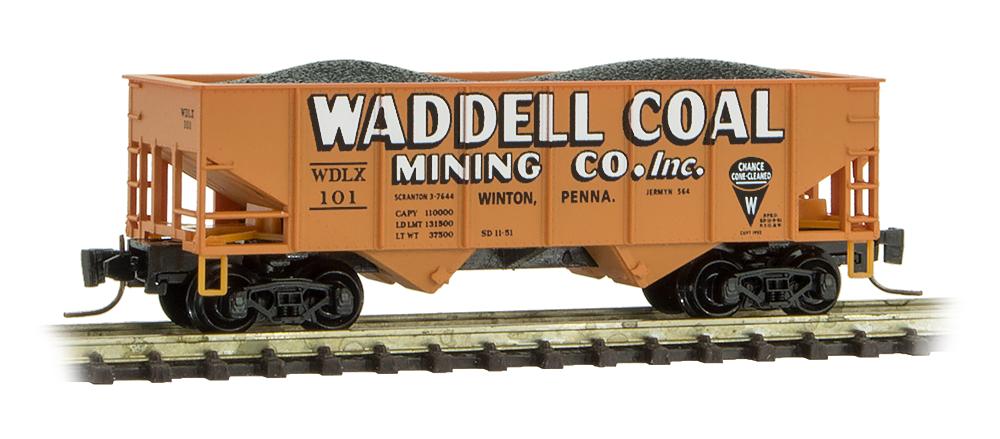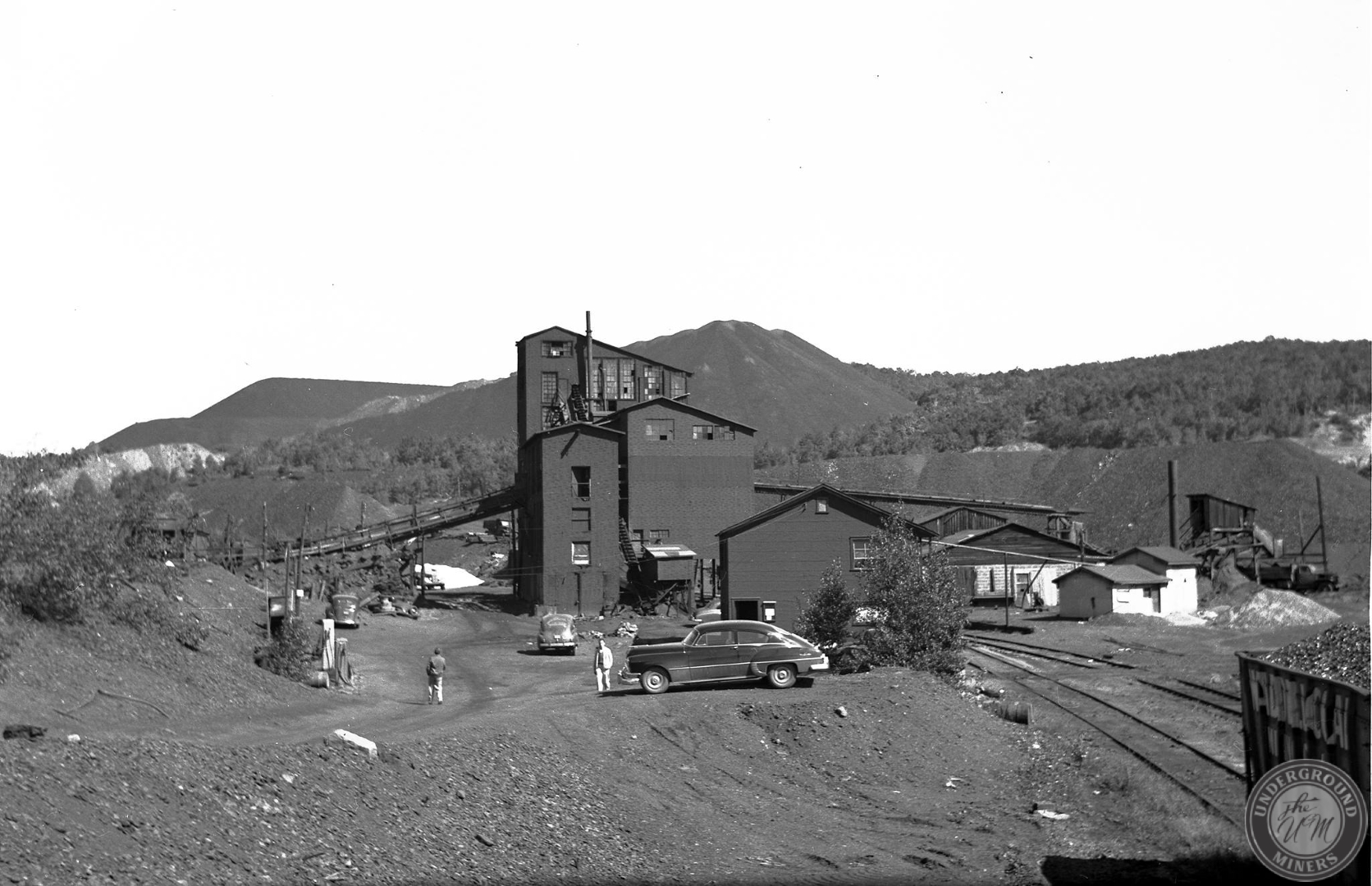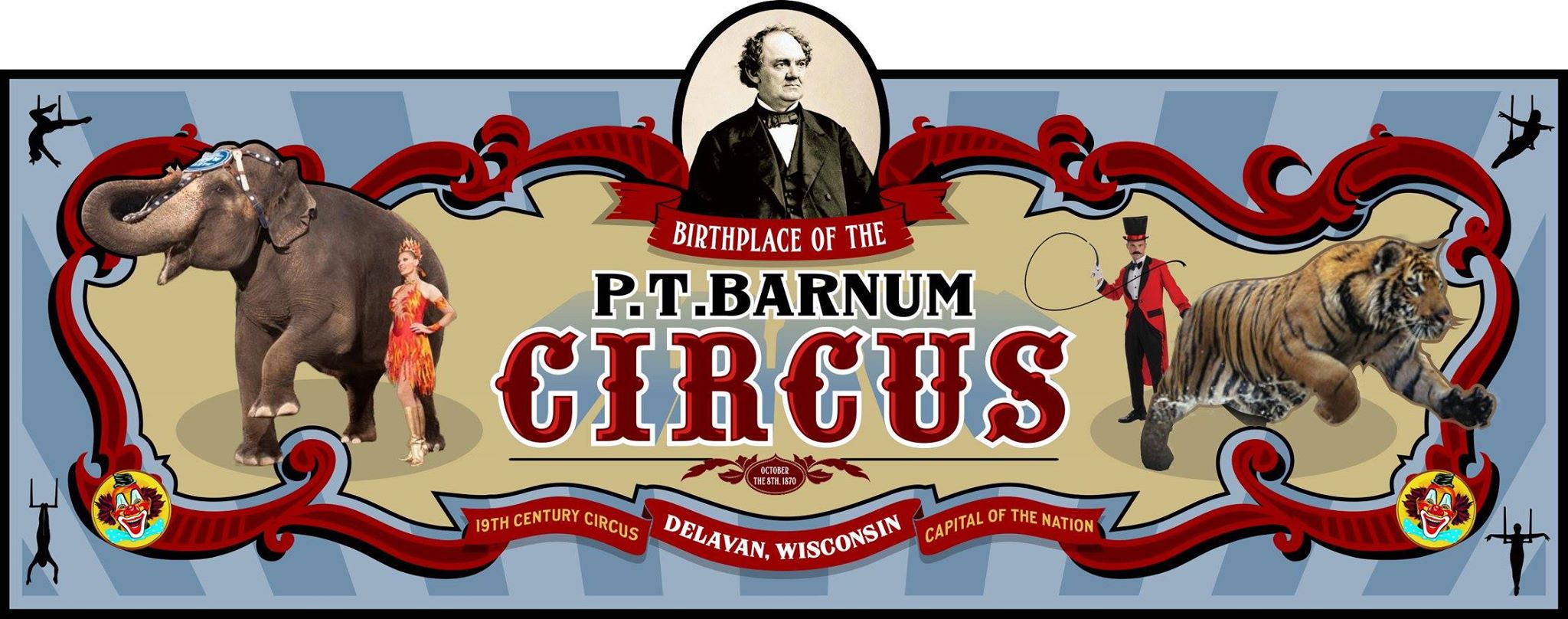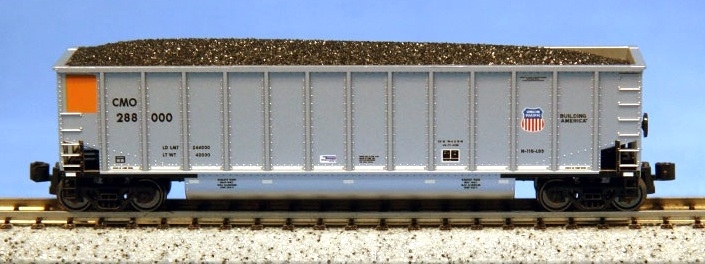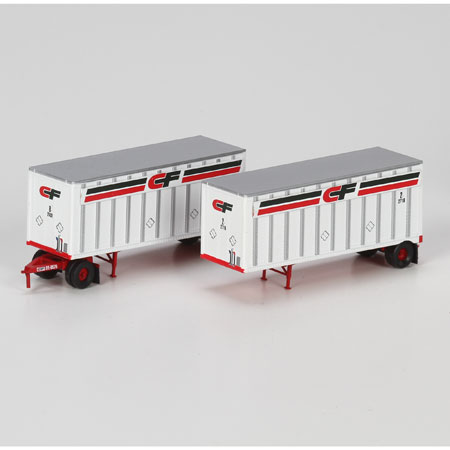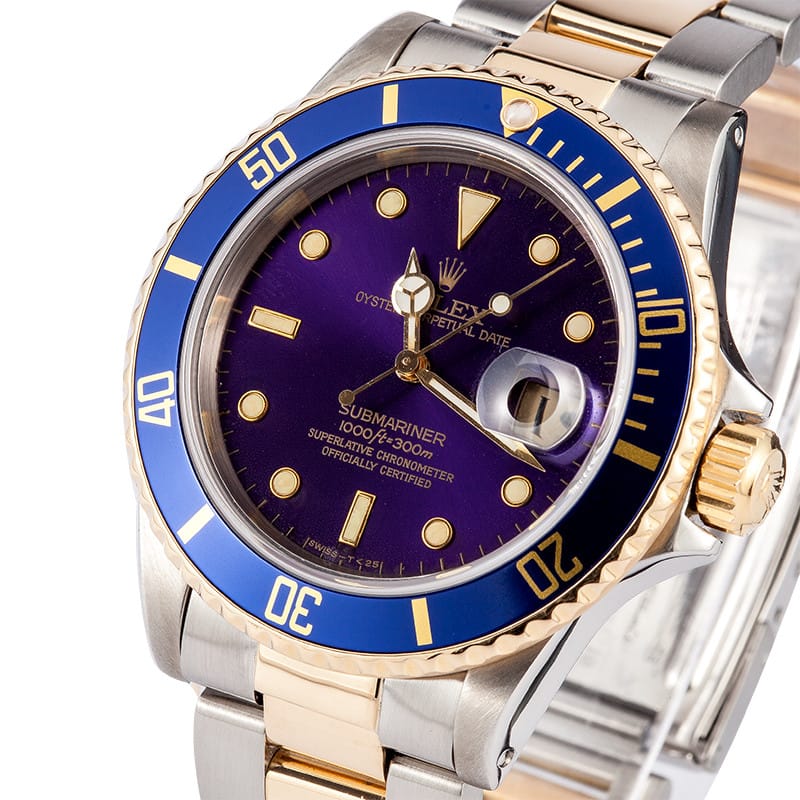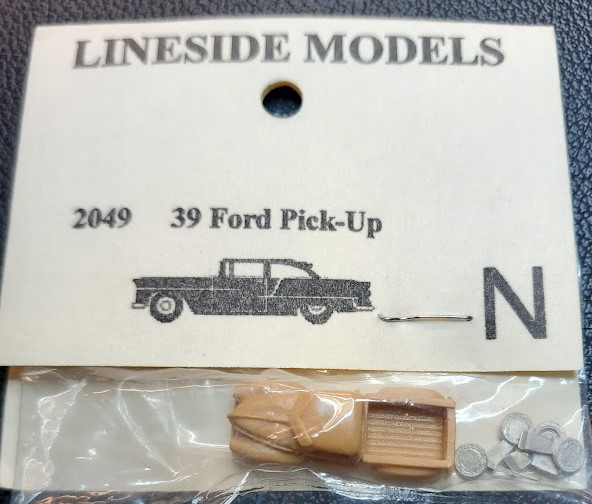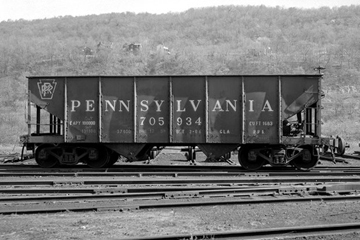Specific Item Information: These 33’ twin-bay hopper with rib sides are orange with bold white and black lettering and run on Bettendorf trucks. Built in the early 1920s, the Waddell Coal Mining Company used these cars to ship coal to loading docks along the line where the coal was distributed to local retailers. In 1951, Waddell leased a number of these O&W hoppers giving a few of them the “billboard hopper” paint scheme.
Prototype History: The open hopper is an evolution of the gondola, a simple freight car used for the transportation of various materials without and facility for protection from the elements. The hopper had higher sides than the gondola and possessed a mechanism on the bottom (bay doors) for discharging the load.
2-Bay ribside coal hoppers were in common use in the first half of the 20th century. The ribbed sides added stability so the loads would not bow out the side of the hoppers. Steel was in plentiful supply after the second world wars and these cars were pretty much everywhere coal was being produced or consumed.
2-Bay ribside coal hoppers were in common use in the first half of the 20th century. The ribbed sides added stability so the loads would not bow out the side of the hoppers. Steel was in plentiful supply after the second world wars and these cars were pretty much everywhere coal was being produced or consumed.
Road Name History: The Waddell Breaker, or Waddell Coal Mining Co. was put in operation in the late 1800’s. It was originally serviced by the O&W railroad. Sometime in the early 1900s, the breaker was rebuilt as a wet coal preparation plant. Although the breaker was destroyed by fire in the 1963, the machinery was salvaged inside the framework and continued to process coal up until the end of the 1980’s under the name American Silt Co. The breaker was owned by Pete Brojack, and sometimes referred to as the Brojack Breaker. A unique aspect of the operation was in the 1950s the O&W dedicated 5 specially painted hopper cars to be used in service taking coal from the Waddell breaker to the Keyser Valley Coal Pockets, at 1500 N Keyser Ave, Scranton, where the cars would be used as bins to hold coal for filling of delivery trucks. The cars were painted in a brilliant bright orange scheme as a billboard advertisement for the Waddell Coal brand. These cars were never taken out on the mainline and remained in use only on the Capouse branch traveling from Keyser Ave to Winton. When the O&W folded, the Erie Lackawanna Railroad briefly took over rail traffic but soon the line was abandoned and pulled up. The Waddell cars were stranded at Keyser Ave, and continued to be used as coal pockets, being filled from behind using trucks. At some point the coal dealer closed, these cars were scrapped and RJ Walker built on the site. Remains of the Waddell Breaker, out buildings, and miscellaneous mine equipment on site were finally scrapped and an old shaft used for pumping water for the breaker was filled in the summer of 2003. One of the last things to be scrapped was an old Erie Lackawanna Hopper car stranded at the breaker site.
Brand/Importer Information:  Micro-Trains Line split off from Kadee Quality Products in 1990. Kadee Quality Products originally got involved in N-Scale by producing a scaled-down version of their successful HO Magne-Matic knuckle coupler system. This coupler was superior to the ubiquitous 'Rapido' style coupler due to two primary factors: superior realistic appearance and the ability to automatically uncouple when stopped over a magnet embedded in a section of track. The success of these couplers in N-Scale quickly translated to the production of trucks, wheels and in 1972 a release of ready-to-run box cars.
Micro-Trains Line split off from Kadee Quality Products in 1990. Kadee Quality Products originally got involved in N-Scale by producing a scaled-down version of their successful HO Magne-Matic knuckle coupler system. This coupler was superior to the ubiquitous 'Rapido' style coupler due to two primary factors: superior realistic appearance and the ability to automatically uncouple when stopped over a magnet embedded in a section of track. The success of these couplers in N-Scale quickly translated to the production of trucks, wheels and in 1972 a release of ready-to-run box cars.
Micro-Trains Line Co. split off from Kadee in 1990 to form a completely independent company. For this reason, products from this company can appear with labels from both enterprises. Due to the nature of production idiosyncrasies and various random factors, the rolling stock from Micro-Trains can have all sorts of interesting variations in both their packaging as well as the products themselves. When acquiring an MTL product it is very important to understand these important production variations that can greatly enhance (or decrease) the value of your purchase.

Micro-Trains Line Co. split off from Kadee in 1990 to form a completely independent company. For this reason, products from this company can appear with labels from both enterprises. Due to the nature of production idiosyncrasies and various random factors, the rolling stock from Micro-Trains can have all sorts of interesting variations in both their packaging as well as the products themselves. When acquiring an MTL product it is very important to understand these important production variations that can greatly enhance (or decrease) the value of your purchase.
Item created by: gdm on 2019-02-28 08:54:17
If you see errors or missing data in this entry, please feel free to log in and edit it. Anyone with a Gmail account can log in instantly.
If you see errors or missing data in this entry, please feel free to log in and edit it. Anyone with a Gmail account can log in instantly.


